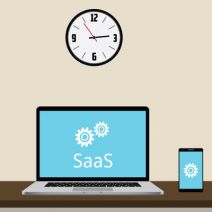SolutionOne Blog
Why SaaS Is Best For Your Business’ Software Needs
 All businesses have certain software solutions that they need to keep their operations going. Be it an email solution or a productivity suite that you lack, your business is held back from ideal operational efficiency. The traditional way of acquiring these pieces of software can be holding your organization back, so we’ve come to you with a solution: Software as a Service (SaaS).
All businesses have certain software solutions that they need to keep their operations going. Be it an email solution or a productivity suite that you lack, your business is held back from ideal operational efficiency. The traditional way of acquiring these pieces of software can be holding your organization back, so we’ve come to you with a solution: Software as a Service (SaaS).
Normally, you would pay for a single software license. Doing so presents your company with a rather high up-front cost for the software, making the total cost quite considerable if you need a lot of licenses. While businesses can take advantage of certain perks, purchasing software per license isn’t necessarily the best way to do it--not when you have other options available.
Another issue entirely is the fact that you have to continuously upgrade and purchase new software licenses for each of your business’s workstations, particularly when your older solutions grow outdated and unsupported. This is yet another cost of implementing your business’s mission-critical applications in the traditional fashion. While you might own your software license outright, it will only last for so long before it must be replaced.
Compared to traditional software purchasing, Software as a Service allows you to pay a flat monthly rate per user. The advantage of this is crucial for a small business that wants to get the most out of their investments. Rather than pay a large cost outright for your software licenses, you pay per user each month, which is a considerable cost savings that could be the difference between breaking your budget and saving money for other investments down the road.
Furthermore, your business will be able to take advantage of the latest versions of each of your software solutions by going the SaaS route. Many Software as a Service applications are hosted in the cloud and accessed through the Internet, allowing your business to always use the most recent version of each application. You won’t have to worry about implementing software patches or security updates if you’re accessing a cloud-hosted application. The provider will keep it updated so that you can always remain confident that your solutions are as secure as possible.
Some examples of a cloud-hosted SaaS include Google’s G-suite, Microsoft’s OneDrive, and pretty much any cloud-based solution that’s paid for on a monthly basis for access to applications. SaaS is more practical, more convenient, and more flexible than its counterparts, so what are you waiting for? To get started with SaaS, give us a call at (214) 299-8555.
Comments